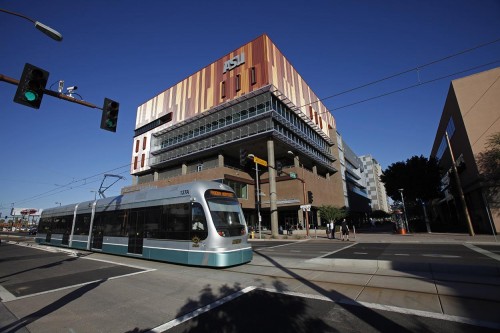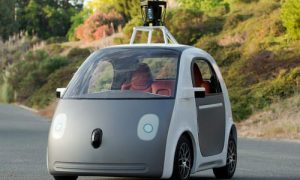New research is emphasizing how important it is for millennials to live where there is a good public transportation system, allowing them to live car-free.
A majority of 500 students attending 10 Ohio public and private universities told an advocacy group that they value the importance of living in a place where they could get around without driving after graduation.
A study by the Rockefeller Foundation and Transportation for America came to a similar conclusion. The 2014 survey reported that four in five millennials in 10 major U.S. cities say they want to live in places where they have a variety of options to get to jobs, school or daily needs.
The 2015 report by the Ohio PIRG Education Fund, “Searching for a Better Ride,” shows that the state needs to expand other transportation options to attract and retain the millennial generation, said Kathleen Woodruff, field organizer for the Fund, which lobbies on education issues.
“Young people want the option to use public transit, bike, walk and use new options such as bikeshare and carshare,” she said.
Nationally, PIRG has done extensive research on the future of transportation. Of the Ohio students surveyed, 86 percent said they believe it is very important to live in a place where they could get around without driving after college. Other findings include:
• Millennials are not abandoning driving outright, but a variety of transportation options are important to this generation (people ages 14-31 years old).
• Cities that already have good systems to get around without driving are increasingly attractive to millennials, with cities like Denver and Minneapolis-St. Paul investing heavily in diverse transportation systems.
• Millennials are looking for ways to travel while staying connected on mobile devices, lowering their individual environmental impact, and reducing the costs of car ownership.
The Rockefeller/Transportation for America survey covered three cities with mature transit systems: Chicago, San Francisco and New York; four cities where transit networks are growing: Minneapolis, Denver, Charlotte and Los Angeles; and three cities making plans to grow their systems: Nashville, Indianapolis and Tampa-St. Petersburg.
According to the survey, millennials want to be less reliant on a car. Almost half who currently own vehicles agree they would seriously consider giving up their car if they could count on a range of transportation options.
Millennials say it is important for their city to offer opportunities to live and work without relying on a car (86 percent agree in mature cities, 82 percent in growing cities, and 77 percent in aspiring cities). Another key motivation for millennials looking for more public transportation options, especially among low-income respondents, is saving money. Other key findings include:
• 70 percent who currently do not have regular access to a vehicle say they could not afford to live in an area without access to public transportation.
• 86 percent say that it is important that their city offer a low-cost public transportation system with affordable fares, especially for those earning less than $30,000 a year.
• 64 percent say that the expense of owning a car is a major reason they want be less reliant on one, including 77 percent of millennials who earn less than $30,000 a year.
• 91 percent believe that investing in quality public transportation systems creates more jobs and improves the economy.
If you’re in an area that was included in one of these studies, go out and talk to your millennials. You also might find out what your city or region is doing to expand its transportation options with young people in mind.
STORY IDEAS










